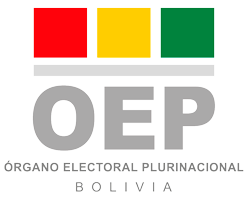Should the united states ratify the american convention on human rights?
Por: Kirk, Mark.
Tipo de material: ArtículoDescripción: 65-89 p.Tema(s): Human Rights | Latin America
En: Instituto Interamericano de Derechos Humanos Revista IIDHResumen: The end of the Cold War forces us to reexamíne the foundations of many interna tional structures. While events in Eastern Europe captured the international Spotlight, changes in Latin America rivaled the collapse
of the Soviet bloc. Throughout La tin America, democratic governments took power.’ Despite the La tin debt crisis, trade soared between Latin America and the rest of the World. The best example of this trend was Memco, where, U.S. -Mexican trade quadrupled during the year1986-1990? The World Bank's own private sector lending arm, the International Finance Corporation, reported that its Latin American investments grew faster «than any other, now occupying over 50% of its total portfolio.
ArtículoDescripción: 65-89 p.Tema(s): Human Rights | Latin America
En: Instituto Interamericano de Derechos Humanos Revista IIDHResumen: The end of the Cold War forces us to reexamíne the foundations of many interna tional structures. While events in Eastern Europe captured the international Spotlight, changes in Latin America rivaled the collapse
of the Soviet bloc. Throughout La tin America, democratic governments took power.’ Despite the La tin debt crisis, trade soared between Latin America and the rest of the World. The best example of this trend was Memco, where, U.S. -Mexican trade quadrupled during the year1986-1990? The World Bank's own private sector lending arm, the International Finance Corporation, reported that its Latin American investments grew faster «than any other, now occupying over 50% of its total portfolio.
| Tipo de ítem | Ubicación actual | Colección | Signatura | Info Vol | Estado | Fecha de vencimiento | Código de barras |
|---|---|---|---|---|---|---|---|
 Revistas
Revistas
|
Cedoc - Tribunal Supremo Electoral Fondo general | Colección hemerográfica | julio-diciembre 1991, No. 14 | Disponible | 2019-1199 |
The end of the Cold War forces us to reexamíne the foundations of many interna tional structures. While events in Eastern Europe captured the international Spotlight, changes in Latin America rivaled the collapse
of the Soviet bloc. Throughout La tin America, democratic governments took power.’ Despite the La tin debt crisis, trade soared between Latin America and the rest of the World. The best example of this trend was Memco, where, U.S. -Mexican trade quadrupled during the year1986-1990? The World Bank's own private sector lending arm, the International Finance Corporation, reported that its Latin American investments grew faster «than any other, now occupying over 50% of its total portfolio.





No hay comentarios para este ejemplar.